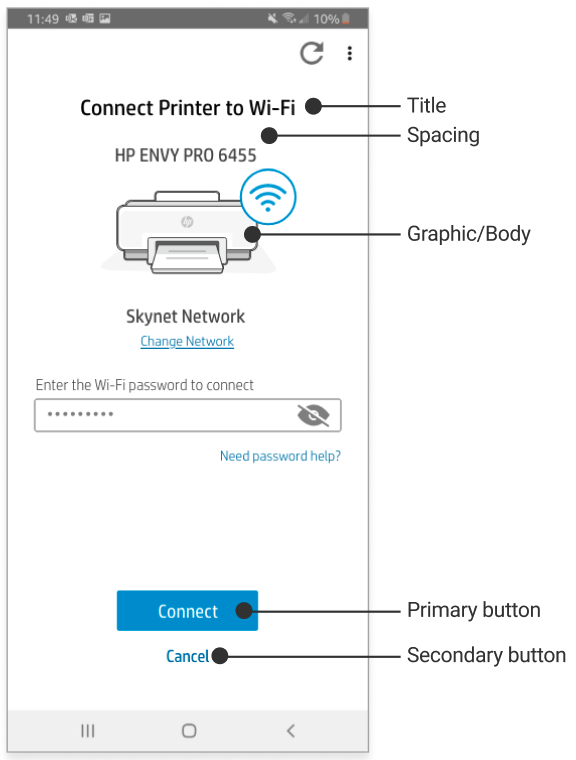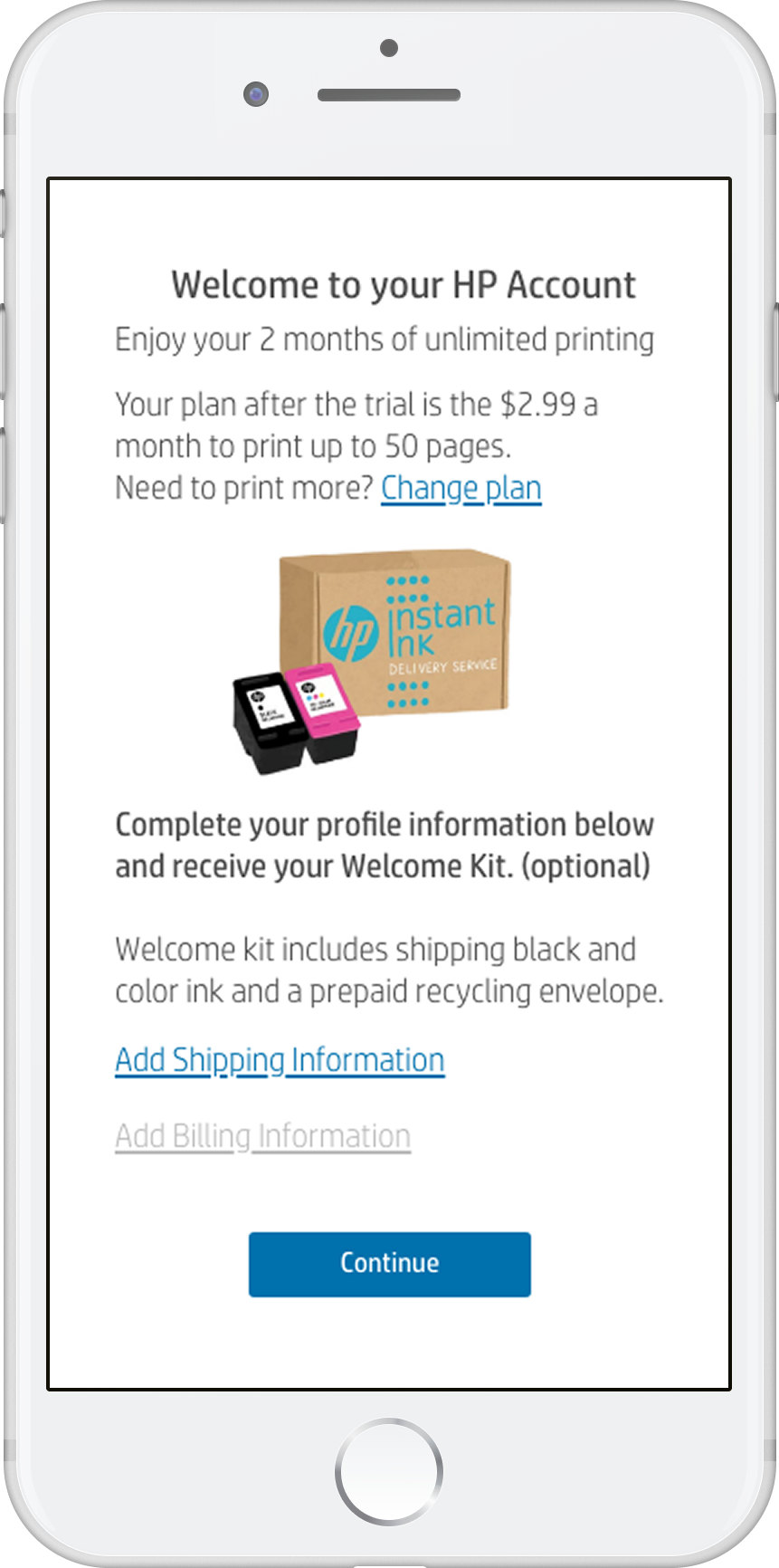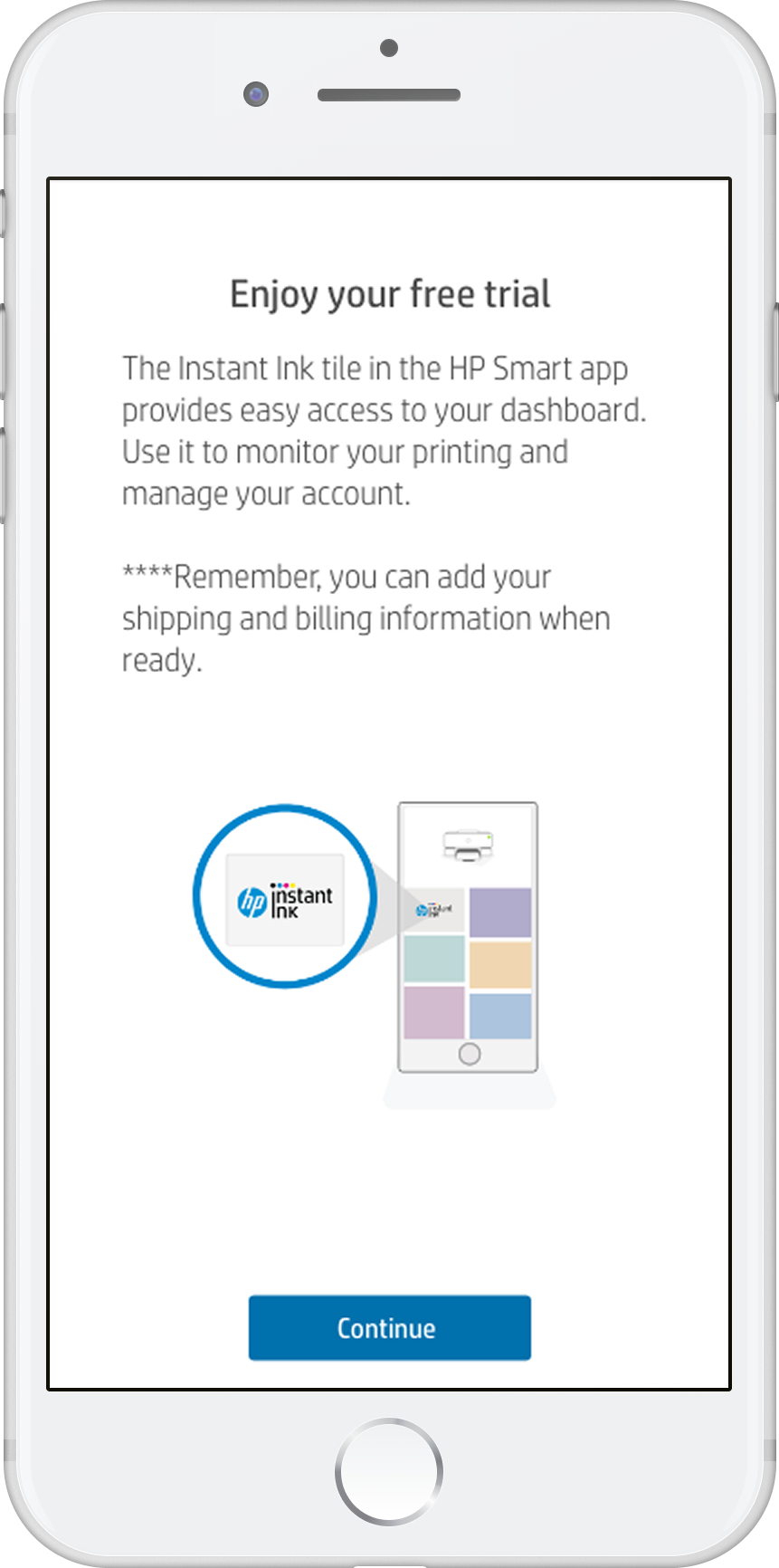Pilot Origin
CONTEXT
Instant Ink is HP’s subscription service that automatically delivers ink when the printer's ink levels are low, ensuring customers never run out.
Role
Interaction Designer
Team
UX Designer, Researcher, Copy Writer, Visual Designer, Product Owner, Engineer & Program Manager
Tools
Adobe XD, Adobe Creative Suite
Timeframe
2021 - Ongoing
CHALLENGE
Users face fatigue during printer setup, lowering Instant Ink enrollment.
RESEARCH
People tend to choose options that feel comfortable and simple.
We conducted 3 rounds of in-lab research with 20 users each to understand customer expectations and feelings about printer purchases and subscriptions.
Conducting a lab study with a participant.
Questions
What kind of information are you looking for while shopping for a printer?
What influences your decision the most? (price, reviews, brand, or features?)
How do you decide which printer offers the best value?
APPROACH
A pilot program that ships printers with subscription cartridges for immediate printing without payment setup.
Cross-functional teams aligned on strategy, defining goals, limitations, and key user touchpoints.
Generating Ideas
Presenting Instant Ink as a key printer feature
Including the Instant Ink Terms and Conditions when creating an account
Making the shipping and billing information fields optional in the user interface
HOW MIGHT WE?
Simplify setup, improve trials, and reduce friction in the customer journey?
CHALLENGES
System architecture
The Instant Ink screens are part of the Onboarding Web Services (OWS) process and are not separate components.Consistency across experiences
OWS establishes the standards for OOBE screens that Instant Ink must follow for a seamless user experience.Ecosystem complexity
Modifying shipping and billing components is challenging due to unforeseen consequences.
OOBE’s sample layout
IDEATION
I designed some mockups and explored the other touchpoints in the journey.
1. Integrated experience
2. Account unlocks trial
3. Optional details entry
4. Multi-channel awareness
PROTOTYPE
Wen signs up easily for the free ink trial with his new HP printer.
The Instant Ink trial is integrated during setup.
ITERATIONS
1. Make trial signup easier by reducing required fields.
2. Specify which information is optional to provide.
3. Propose a banner to inform users about trial monitoring.
FINAL DESIGNS
These are the final pilot screens.
Account creation
Value proposition
Shipping/Billing (opt.)
Thank you
RESULTS
who purchased these printers
proceeded with the trial
90% of customers
provided their shipping and
billing during printer setup
25% of customers
40% increase
in the adoption rate
compared to the previous 20%
LEARNINGS
Removing mandatory billing and shipping steps simplified the process but raised concerns about the service's value.
Customers expect hardware but are surprised by software offers. Digital offers should better highlight their value and long-term benefits.
Design involves trade-offs. Hardware evolves slower than software, so digital solutions must be flexible.









